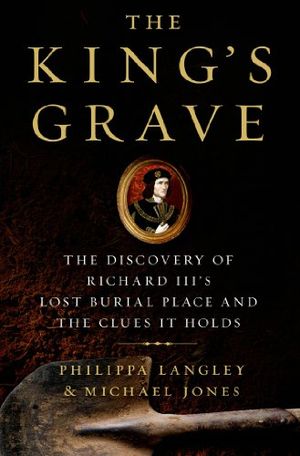They Found Richard III. So Now What?
What the remains of the “hunchback” king can teach us about other English royals
The last time Richard III was buried in Leicester, England, he had been taken from a battlefield, slung naked over a horse, stabbed in the buttocks with a dagger and thrown into a shallow grave. That was late August 1485. On Thursday, March 26, 2015, Richard will be buried again. This time will be different.
We’ve learned a lot from Richard’s bones since they were discovered two and half years ago beneath a parking lot and identified using DNA testing. The so-called “hunchback king” had idiopathic scoliosis, a curvature of the spine developed in his teenage years. Worn-away rear molars suggest that he ground his teeth. Soil samples from his grave showed that parasitic roundworms had infested his gut. Isotope analysis of his ribs revealed his banqueting tastes: peacock, heron, swan, lots of wine. But it’s not always good to be the king. Wounds to Richard’s skull show that when he died, amid a frenzy of slaughter at the Battle of Bosworth, the top of his head was lopped off like a soft-boiled egg.
Now it’s time to put Richard back in the ground. Following five days of pageantry, Richard’s bones will be re-interred at Leicester Cathedral, in a tomb carved from stone quarried in Yorkshire, from which his branch of the Plantagenet family (the House of York) drew its name. There will be a solemn tour of the countryside, services in the Catholic and Anglican traditions, public viewings of the coffin and an appearance from a (living) royal at the final burial ceremony.
Seem novel? Think again. The English have a tradition of ceremonial royal reburial going back nearly 1,000 years. In 1269 the remains of Edward the Confessor, England’s only canonized monarch, were moved to Westminster Abbey. Nine years later the monks of Glastonbury Abbey reinterred King Arthur and Queen Guinevere—a slick play for tourism, surely not lost on Leicester in planning its ritual of medieval re-enactment. In 1413 Henry V held a parade for the transport of Richard II’s body to Westminster Abbey in a monumental act of political reconciliation. (Henry’s father had murdered Richard, so it was the least he could do.)
But with Richard III buried, who’s next to dig up? DNA tests could likely identify whether the two children’s skeletons sealed in an urn at Westminster are those of the disappeared Princes in the Tower, sons and heirs to King Edward IV—though perhaps fall short of answering whether they were murdered by their uncle Richard III. Opening the tomb of King John (d. 1216) might tell us if the villain of the Magna Carta died after being poisoned by a monk (as is sometimes claimed) or of dysentery. Finding the skeleton of Edward II inside a lead coffin in Gloucester Abbey could confirm that he died in 1327—or provide credence, if the bones are not his, to the story that he escaped to Italy and, as some historians claim, lived as a hermit.
Sadly for the curious, these tombs will likely stay shut. Despite what we might learn, in our scientific age, it takes finding a long-dead monarch under a parking lot to dispel our modern squeamishness about meddling with the dead. Until that changes, only pageantry remains.
Related Reads

The King's Grave: The Discovery of Richard III's Lost Burial Place and the Clues It Holds